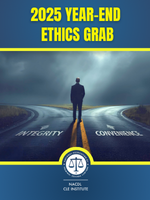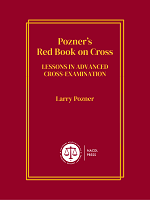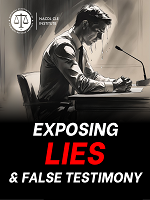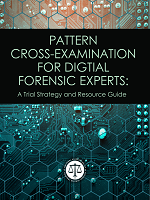State Information
In February 2020, the National Association of Criminal Defense Lawyers asked its membership about how it communicated with clients in custody. The survey focused particularly on lawyers’ ability to communicate with their detained and incarcerated clients. The below data is focused on findings regarding confidentiality, a key requirement of attorney-client communication.
| Facility | Phone | Video | In-Person Want to submit a correction or additional information about facilities you visit? Tell us in this form. | |
|---|---|---|---|---|
| Anoka County Jail |
|
|
|
|
| Stearns County Jail |
|
|
|
|
Federal Information
In the Eighth Circuit, parties who have suffered an intrusion into their attorney-client privileged conversations only succeed in establishing a constitutional harm when they can prove that they suffered prejudice from an intentional intrusion. {1} 1 Mastrian v. McManus, 554 F.2d 813, 821 (8th Cir. 1977). The Eighth Circuit, like many other circuits, requires two showings to establish a Sixth Amendment violation: there must have been an intentional intrusion into the attorney-client relationship by the government, and the defendant/petitioner must have suffered prejudice. {2} 2 Id.; see also United States v. Singer, 785 F.2d 228, 234 (8th Cir. 1986). The remedy is tailored to the violation that will allow a defendant to proceed without prejudice in a later proceeding. {3} 3 Singer, 785 F.2d at 234. That remedy is almost always less drastic than the dismissal of indictment. {4} 4 Id. When a court can determine that there was no prejudice, it may not reach the purposeful intrusion prong of the analysis. {5} 5 See United States v. Romanyshyn, No. CR. 08-50062-01-KES, 2009 WL 3673094, at *4 (D.S.D. Oct. 30, 2009) (though the court goes through a length analysis of the record, it refuses to decide whether the intrusion was purposeful or not because there was no prejudice). This opinion includes a long record and could be helpful for advocates.
An intentional intrusion is one in which the government had an active role in recovering attorney-client communications. {6} 6 Singer, 785 F.2d at 232 (noting that “the government properly may receive confidential documents if it plays no role in their wrongful procurement and if it has probable cause to believe they constitute proof of criminal activity”). In a leading Eighth Circuit case, Singer, the government became aware that a third-party had access to the defendant’s attorney-client communications. Though it may have been appropriate for the government to receive some of these materials because there was probable cause of perjury, the government requested the entire file from the third party. The court highlighted the fact that the government then reviewed the entire file, beyond what it needed to investigate the perjury allegation. Decisions within the Eighth Circuit have reiterated that a Sixth Amendment violation does not automatically occur when attorney-client communications are monitored or even when those communications are obtained by the prosecution. {7} 7 Mastrian, 554 F.2d at 821; see also Singer, 785 F.2d at 232–34. Singer specifically noted that it is potentially proper for the government to sometimes receive these types of documents “if it has no role in their wrongful procurement and if it has probable cause to believe they constitute proof of criminal activity." {8} 8 Singer, 785 F.2d at 232–34.
The defendant must also demonstrate that she suffered prejudice or a “substantial threat” of prejudice from the intrusion. {9} 9 Mastrian, 554 F.2d at 821; see also Singer, 785 F.2d at 234. The leading Eighth Circuit case relied on the Supreme Court’s decision in Weatherford v. Bursey in trying to establish what prejudice is. {10} 10 Mastrian, 554 F.2d at 821. It held that the defendant must demonstrate a “nexus between [the intrusion] and some benefit to the prosecuting authorities." {11} 11 Id. If a detainee has had his conversations with his counsel recorded, his Sixth Amendment claim will fail unless he can show that the recordings had any impact on his trial. {12} 12 See, e.g., Clark v. Wood, 823 F.2d 1241, 1249 (8th Cir. 1987) (holding that even though the county jail recorded conversations with counsel, it did not impact his trial and thus there was no recourse); United States v. Solomon, 679 F.2d 1246, 1250 (8th Cir.1982). In Clark v. Wood, the Eighth Circuit expressly disagreed with the contention that the aggrieved party only needs to show that attorney-client conversations were monitored. {13} 13 Id.
In U.S. v. Romanyshyn, a law enforcement officer instructed a coworker to download and transcribe the defendant’s jail calls. {14} 14 Romanyshyn, at *4. Again, the court goes through a lengthy description of how involved the different parties were in recording these calls. The court went through the agent’s testimony, including that the agent did not know it was possible for attorney-client conversations to be recording. The agent did not specify that the coworker should avoid listening to attorney-client calls. Thus, the coworker listened to, transcribed, and took notes on several such calls. A disc of the recordings (including the attorney-client conversations) and the notes were provided to the prosecution team. However, the transcribing coworker never met with her supervising agent or the prosecution team to discuss her work. The court found there was no prejudice to the defendant and didn’t reach whether this intrusion was purposeful or not. In making the prejudice finding, the court noted that the AUSA never listened to the conversations or read the notes and that no evidence was actually used. {15} 15 Id at *5. Lastly, the court reviewed the statements and found that there would have been no benefit to the government anyway. {16} 16 Id.













